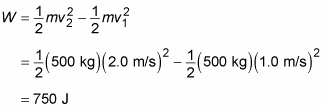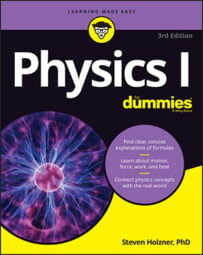Sometimes, it isn’t just the amount of work you do but the rate at which you do work that’s important. In physics, the concept of power gives you an idea of how much work you can expect in a certain amount of time.
Power in physics is the amount of work done divided by the time it takes, or the rate of work. Here’s what that looks like in equation form:
Assume you have two speedboats of equal mass, and you want to know which one will get you up to a speed of 120 miles per hour faster. Ignoring silly details like friction, you’ll need the same amount of work to get up to that speed, but how long it will take? If one boat takes three weeks to get you up to 120 miles per hour, that may not be the one you take to the races. In other words, the amount of work you do in a certain amount of time can make a big difference.
If the work done at any one instant varies, you may want to work out the average work done over the time t. An average quantity in physics is often written with a bar over it, as in the following equation for average power:
Power is work or energy divided by time, so power has the units of joules/second, which is called the watt — a familiar term for just about anybody who uses anything electrical. You abbreviate a watt as simply W, so a 100-watt light bulb converts 100 joules of electrical energy into light and heat every second.
You occasionally run across symbol conflicts in physics, such as the W for watts and the W for work. This conflict isn’t serious, however, because one symbol is for units (watts) and one is for a concept (work). Capitalization is standard, so be sure to pay attention to units versus concepts.
Note that because work and time are scalar quantities (they have no direction), power is a scalar as well.

Say, for example, that you’re in a horse-drawn sleigh on the way to your grandmother’s house. At one point, the horse accelerates the sleigh with you on it, with a combined mass of 500 kilograms, from 1.0 meter/second to 2.0 meters/second in 2.0 seconds. How much power does the move take? Assuming no friction on the snow, the total work done on the sleigh, from the work-energy theorem, is
Plugging in the numbers gives you

Because the horse does this work in 2.0 seconds, the power needed is
One horsepower is 745.7 watts, so the horse is giving you about one-half horsepower — not too bad for a one-horse open sleigh.

